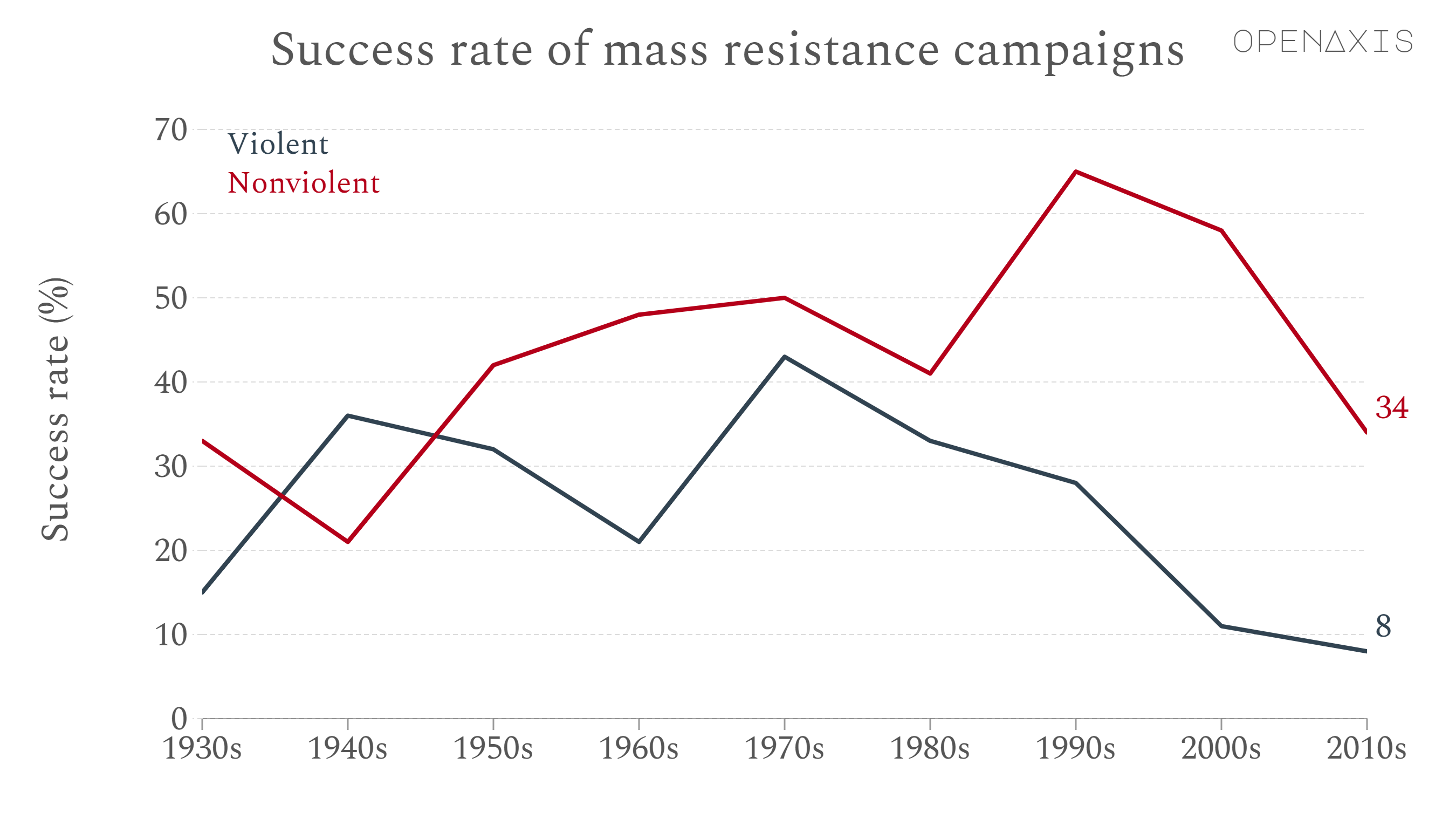Scholars of civil resistance generally define “success” as the overthrow of a government or territorial independence achieved because of a campaign within a year of its peak.
Among the 565 campaigns that have both begun and ended over the past 120 years, about 51 percent of the nonviolent campaigns have succeeded outright, while only about 26 percent of the violent ones have.
Nonviolent resistance thus outperforms violence by a 2-to-1 margin. (Sixteen percent of the nonviolent campaigns and 12 percent of violent ones ended in limited success, while 33 percent of nonviolent campaigns and 61 percent of violent ones ultimately failed.)
Moreover, in countries where civil-resistance campaigns took place, chances of democratic consolidation, periods of relative post-conflict stability, and various quality-of-life indicators were higher after the conflict than in the countries that experienced civil war.
Source: Civil Resistance: What Everyone Needs to Know by Erica Chenoweth

Her essay in the Journal of Democracy can be found here as well